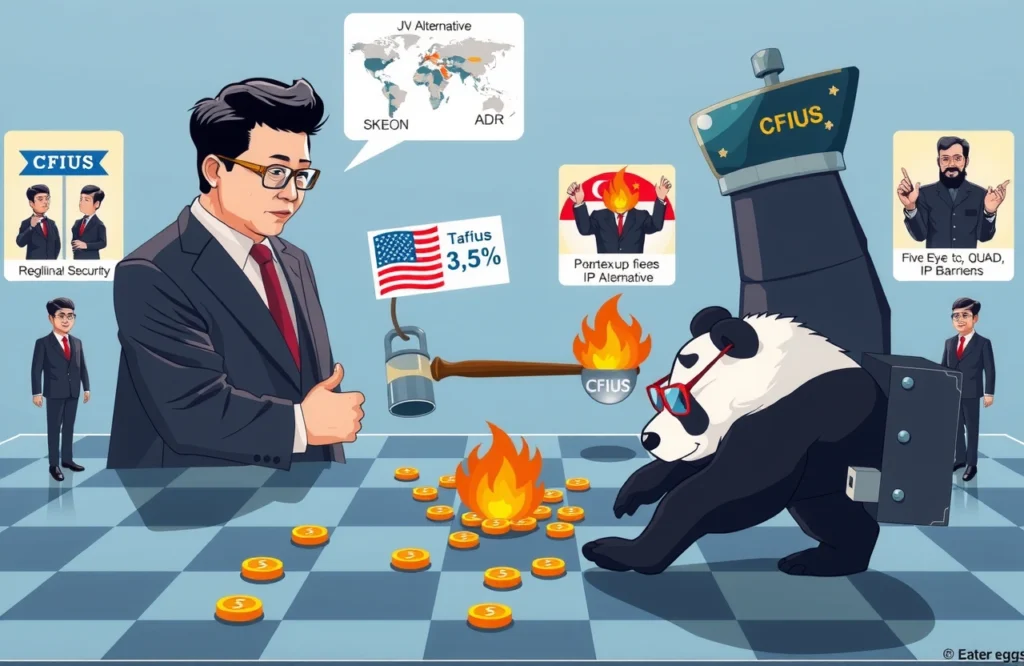– Overseas intellectual property lawsuits against Chinese enterprises surged 40% year-on-year in 2024
– Cross-border e-commerce emerged as the sector most affected by patent, trademark, and copyright disputes
– Annual intangible asset losses from overseas trademark hijacking exceed billions of RMB over two decades
– Companies face additional risks including trade show IP examinations and customs seizures
Against the backdrop of global supply chain realignment, the 2025 China Enterprise Global Expansion Summit Forum in Shenzhen recently spotlighted a disturbing trend challenging Chinese businesses abroad. Zhang Huawei (张华薇), Global Board Deputy Director of Yingke Law Firm and Director of Yingke Foreign-Related Legal Research Institute, revealed that Chinese companies encountered 40% more overseas intellectual property lawsuits this year compared to 2023, with e-commerce exporters bearing the brunt of these legal assaults. This alarming escalation transforms intellectual property defense from a legal concern into an urgent strategic priority for firms navigating international markets. As Chinese brands expand their global footprint, understanding the shifting terrain of overseas intellectual property disputes becomes critical for survival and competitiveness.
The Rising Tide: Unprecedented Growth in Overseas IP Disputes
The 40% year-on-year surge in overseas intellectual property litigation represents one of the sharpest annual increases recorded to date. This accelerating trend showcases how overseas intellectual property disputes have evolved into default weapons in competitive markets. According to Zhang Huawei (张华薇), patent conflicts lead infringement claims (55%), followed by trademark disputes (30%) and copyright litigation (15%).
Global IPO data reveals that IP lawsuits typically concentrate in manufacturing hubs and consumer markets:
– United States: 45% of all cases filed
– European Union: 30% concentrated in Germany/France
– Southeast Asia: 15% increase year-over-year primarily across Vietnam/Indonesia
Structural Drivers Behind Litigation Spike
Three primary forces propel this growth curve:
1. Accelerated globalization of mid-sized Chinese firms lacking IP experience
2. Increased detection capabilities from customs authorities worldwide
3. Sophisticated monitoring technologies deployed by competitors
E-Commerce Entrepreneurs: Primary Targets in Foreign Courts
Cross-border e-commerce platforms account for nearly 68% of China’s overseas IP lawsuits according to summit data. This vulnerability stems from structural features inherent to digital marketplaces:
– High-volume listing velocity prevents thorough IP clearance
– Distributed supplier networks obscure accountability
– Algorithmic repricing mechanisms trigger brand protection protocols
The Patent Minefield in Online Retail
Platforms like Amazon and eBay automatically flag products lacking verifiable intellectual property documentation. Recent measures include:
– Automatic listing removal after two infringement reports
– Mandatory seller insurance for IP-infringement liability
– Blockchain verification systems for product provenance
The 2022 U.S. SHOP SAFE Act now makes platforms jointly liable, forcing removal of suspected listings within 24 hours of complaints under penalty of steep fines.
Traditional Vulnerabilities: Trademark Hijacking and Untold Losses
Trademark piracy represents China’s longest-running struggle in overseas intellectual property protection. Foreign entities routinely register established Chinese brands in their jurisdictions then demand licensing fees or file infringement suits. This practice has produced annual intangible asset losses exceeding ¥10 billion over two decades.
Emerging Hotspots for Brand Hijacking
Developing markets with first-to-file trademark systems present highest risks:
– Kenya/South Africa: 42% increase in Chinese trademark conflicts (2022-2024)
– Mexico/Brazil: Average 8-month advance filing by local brokers
– Indonesia/Vietnam: Dual-language registration vulnerabilities
Zhang Huawei (张华薇) emphasized: “We’ve seen established brands lose entire market access because their trademarks were registered locally before entry. Prevention costs fractions of recovery expenses.”
Beyond Lawsuits: Secondary Threats at Borders and Exhibitions
Overseas intellectual property disputes extend beyond courtroom battles into customs warehouses and trade show floors heightened surveillance activity.
Preemptive Countermeasures During International Events
Trade shows have become hunting grounds for IP enforcement:
– German fairs now require exhibition permits confirming IP ownership
– CES (Las Vegas) employs automated product scanning tech
– Canton Fair exhibitors face mandatory IP disclosure requirements
Global customs seizure statistics reveal worrying patterns:
– EU border forces intercepted €140M Chinese goods on IP grounds (2023)
– U.S. Customs marked 67% increase in e-commerce IP seizures (Q1 2024)
– ASEAN ports implemented blockchain verification for trademark registration
Strategic Defense: Expert Recommendations for Future-Proofing
Combatting overseas intellectual property disputes demands proactive frameworks:
Compliance Blueprint for Global Sellers
– Register core IP assets before market entry: File patents/trademarks under Madrid and PCT frameworks
– Secure domain names locally with linguistic variations
– Establish distributor IP clauses assigning liability
– Deploy automated monitoring across global registries
Zhang Huawei’s (张华薇) institute developed the Shield Protocol framework prioritizing:
1. IP clearance scanning before product listing
2. Portfolio allocation by jurisdiction vulnerability
3. Emergency response teams for sudden seizures
The Path Forward: Systemic Solutions and Global Collaborations
Beyond enterprise measures, systemic approaches address these overseas intellectual property disputes comprehensively:
Institutional Partnership Models
Successful alliances include:
– China Council for Promotion of International Trade IP services centers
– EU-China IP Dialogues dispute resolution mechanisms
– WIPO Arbitration coupled with national enforcement
Industry-led collaborations recently launched:
– E-commerce platform compliance certifications
– Common patent pools reducing royalty burdens
– Industry-wide defensive publication strategies
Chinese businesses navigating today’s complex terrain must recognize intellectual property protection as indispensable armor. The 40% spike in lawsuits underscores inadequate preparation against shifting regulatory landscapes. Companies delaying IP infrastructure investment remain vulnerable to litigation costs exceeding 300% of prevention expenditures. Business leaders must institutionalize cross-border IP protocols integrating legal, technological, and cultural dimensions. Assign executive ownership for global IP portfolios immediately, conduct jurisdiction-specific vulnerability audits quarterly, and establish rapid-response legal partnerships in primary markets. Converting overseas intellectual property disputes from debilitating threats into managed risks represents the ultimate competitive edge worth pursuing today.




